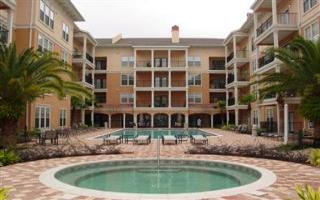
SAN BERNARDINO, CA - Pockets of the Inland Empire's apartment market could be on the verge of going bust in the next year, forcing the average cost of apartment living to drop for the first time in a decade. Over-leveraged and upside down on their investments, some apartment owners are losing renters in droves, while healthier landlords ride out the economy's brutal recession blows. Nick Manfredi is betting that several apartment communities purchased between 2004 and 2007 will go into foreclosure over the next two years.
"These are future acquisitions," said the president of Corona-based Forum Real Estate Investments Inc. and TheShortSaleProcessor.com about apartment investment groups. "There are some hard-core, shrewd investors waiting out there ... saying, 'Let's wait until this drops like a rock."'
Meanwhile, the real-estate industry's ferocious appetite for constructing two- and three-story multifamily rentals has ground to a near halt as landlords wait for the market to soak up the existing inventory. Inland Empire apartments coming online in 2009 will push the average vacancy rate to nearly 8percent, according to a report by Marcus and Millichap's real-estate research division. That's more than three times 2005's vacancy rate.
A mere 260 new apartment units will open their doors to the local rental market this year - a massive drop. Apartment-unit completions averaged 2,300 annually over the past five years. Effective rents - the total amount paid over a lease's term - are slated to fall more than 2 percent this year to $1,007 a month. The numbers are red flags for investors waiting on the sidelines.
"For buyers, the knee-jerk reaction is, 'I'm afraid to buy today because I might see this building go for cheaper in six months,"' said Alex Garcia, senior vice president of investments at Marcus and Millichap's Ontario office. "They're negotiating very, very hard. Rental income (for landlords) could conceivably go down as people continue to be laid off."
While the Ontario-Rancho Cucamonga area is experiencing from 6percent to 8 percent vacancy rates, owners of apartments in the San Bernardino area are getting hammered. "I'm doing proposals every week where I'm seeing 10 to 15 percent vacancy on apartment complexes that had 5 to 7 percent a year or two ago," Garcia said. He's even seen a few communities where from 20 percent to 30 percent of a complex is empty. Overbuilding is the main culprit, but the other is a glut of single-family home foreclosures being purchased by investors and put on the rental market.
Some evicted homeowners are finding they can rent a small house for almost the same price an apartment rents for. "The major expectation was that the foreclosure problem was going to create (apartment) renters, and that's just not happening," Manfredi said. "Only 20 percent of them are becoming apartment renters. The rest prefer to live in a home."
In San Bernardino County, the average cost of renting an apartment had jumped 25 percent between 2003 and 2007, and it nearly doubled between 1996 and 2007, according to data collected by RealFacts, a Novato-based apartment research company. The average rent for a one-bedroom, one-bathroom apartment was $548 in 1996. It had climbed to $1,021 by 2007.
If you're paying $1,000 and your apartment rent drops by 2 percent - or perhaps double or triple that number - you'll have $20 to $60 extra each month. But not all apartment rents will fall. The healthier pockets across the two-county region might dip before continuing a slow, steady rise.
Randall Lewis, executive vice president of Upland-based Lewis Apartment Communities, is forecasting higher apartment rents. "If anything, I think there's a chance they'll go up slightly in the next couple of months," he said, noting the construction standstill's effect on apartment supply. "Very few apartments will be built in the Inland Empire in 2009 and 2010." Manfredi begs to differ, citing what he says will be a huge jump in foreclosures turned into rentals over the next six months. "It's going to be wild," he said. "I can't see any other way."
Source: sbsun.com